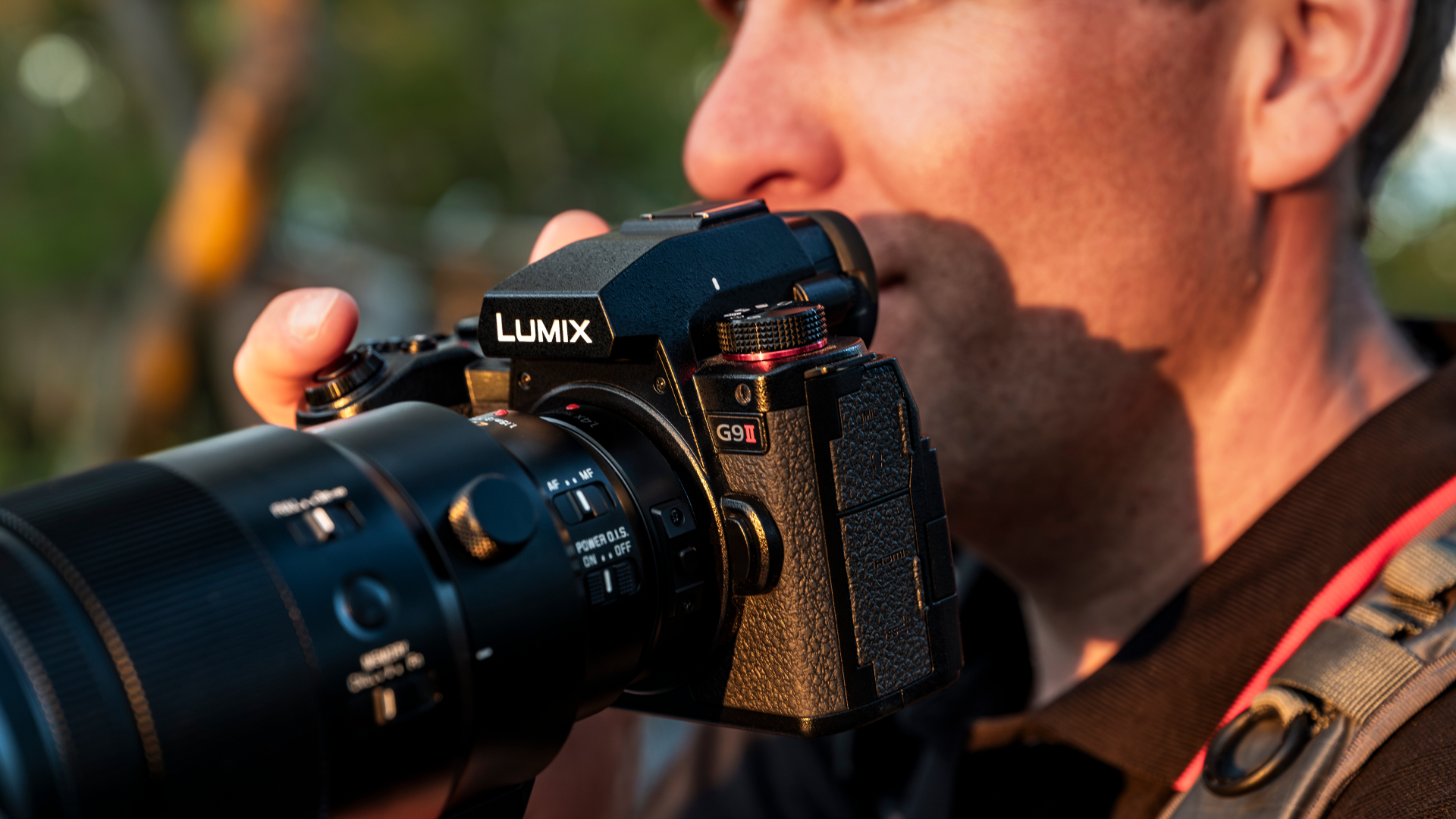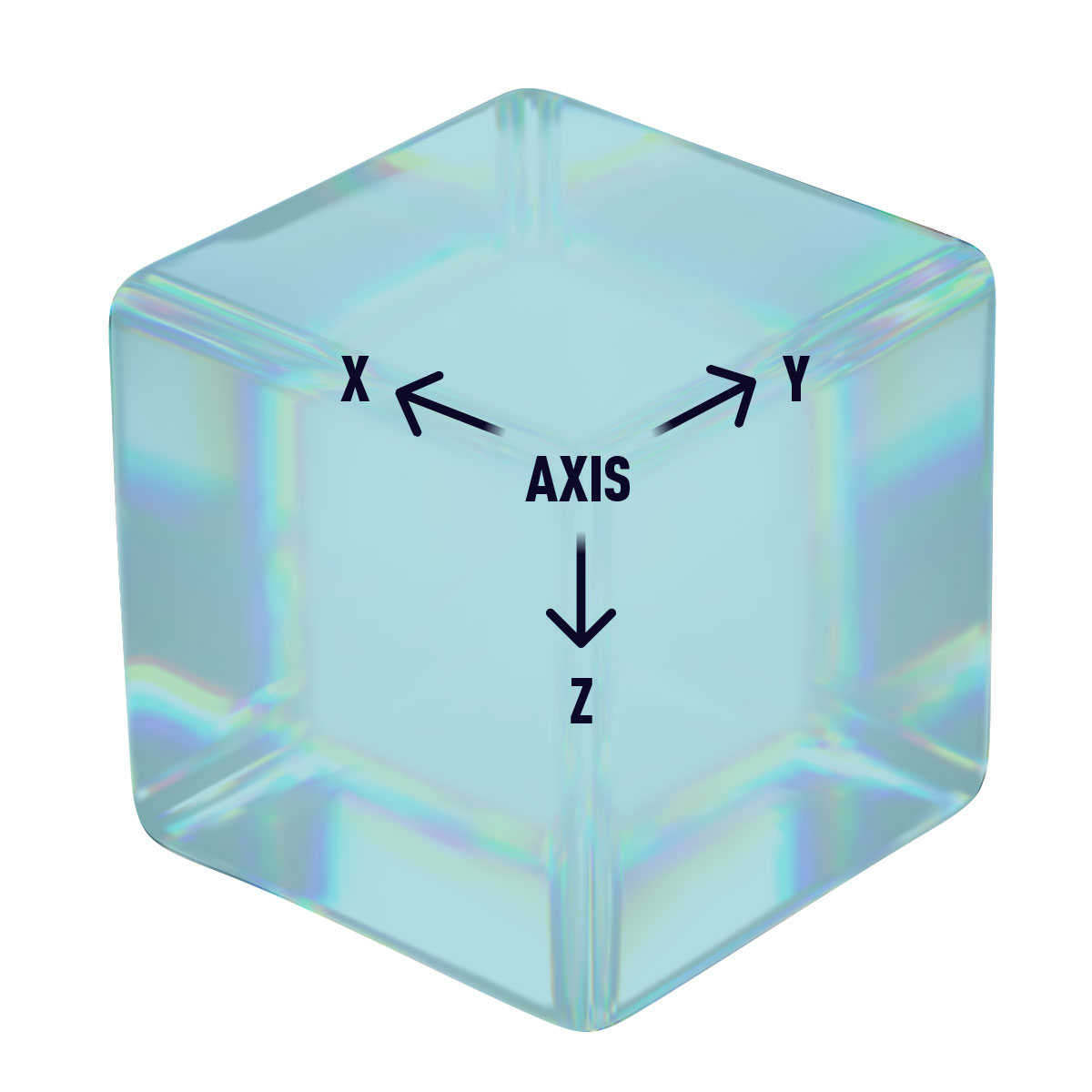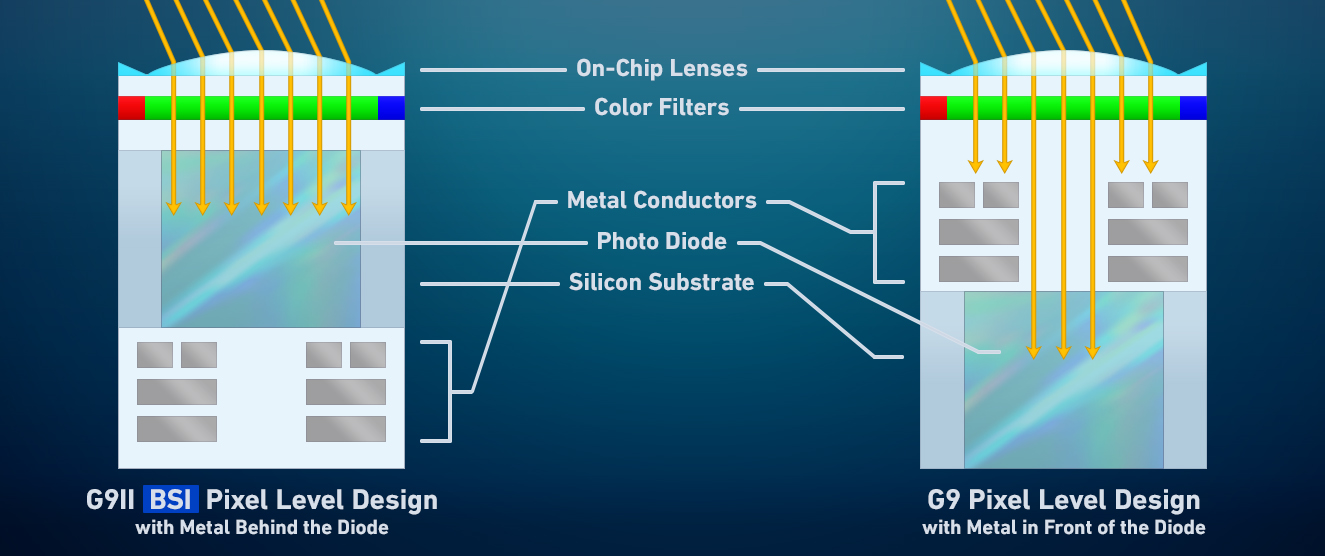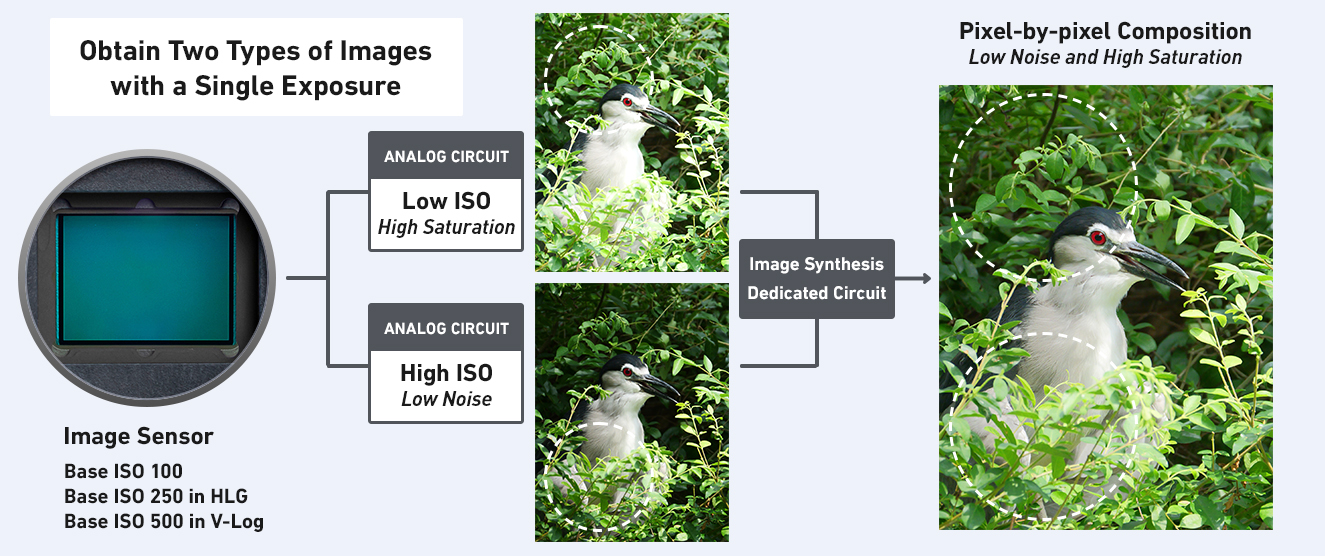
The LUMIX G9II was designed with the needs of portrait, landscape, wildlife and sports photographers top of mind. Unfortunately, these broad photo use cases place unique challenges on the imaging sensor of the camera.
During the design phase of the G9II, LUMIX engineers identified four core performance criteria for the new sensor: higher resolution than the previous model, improved high ISO image quality, double the frame rate of the previous generation sensor, and increased dynamic range.
Many of these goals can counteract one other. For example, more resolution usually sacrifices high ISO performance, and faster readout speeds can reduce dynamic range. Thus, several new approaches were required to reach the design goals.
Light and photons, photosites and diodes: A primer
In order to understand the level of engineering dedicated to the design of the G9II sensor, a basic understanding of how a digital camera captures the light that becomes an image is needed.
As light (measured in photons) reflects off a surface being photographed, the photons enter the camera lens and are captured on the image sensor's photosites or pixels (we will call these diodes, since this is their technical term). The diodes then convert the photons into electrons, which are later digitized and represent the final image.
A diode has three axis: X (height) and Y (width) determine sensor sensitivity, while Z (depth) determines the maximum saturation point of the diode. In this article section, we will concentrate on the X and Y axis.
The X and Y axis are almost always the same length, since most diodes are square. The larger these dimensions, the easier it is to capture photons when there are not many available (when it is dark, for example). For this reason, a larger diode is desirable – but the larger the diode, the lower the resolution.
This means that engineers are constantly looking for ways to increase the X and Y axis by removing material from in-between the diodes. To simplify this concept, the bigger the diode, the better the picture when it is dark – but resolution is lost in the process.

Higher resolution with improved high ISO quality
While the original LUMIX G9 had a 20.1MP CMOS sensor, the G9II has a 25.21MP CMOS – a 22% increase in resolution.
As noted, if the resolution is increased the diode gets smaller – which means less capture area when photons are not plentiful.
How did the sensor design team address this challenge? They simply removed the wiring and excess material that were obstructing the diodes on top of the sensor, and embedded them behind the diodes in the silicon of the CMOS sensor. This gains back much of the diode area lost to the extra resolution, a solution commonly called a backside-illuminated sensor (or BSI for short).

Fast readout sensors with no loss in dynamic range
Where the G9 was capable of capturing 4K video at 60fps, the new G9II is capable of capturing C4K video at 120fps – double the frame rate.
An inherent advantage to the Micro Four Thirds sensor is its size; a smaller sensor can naturally read out its information faster. The design team looked at processes that added latency in converting the photons into data, and reduced these stages or eliminated them entirely.
When it comes to stills, the G9II delivers a best-in-class combination of continuous burst shooting (60fps) with continuous autofocus and excellent dynamic range.
Tying it all together: Dynamic Range Boost
So, the G9II sensor can read out C4K video at 120fps but the photo function can only deliver 60fps with continuous autofocus. What gives?
The sensor has a function called Dynamic Range Boost (DR boost, for short). If the camera frame rate is reduced to 60fps instead of 120fps, this provides more time for pixel output synthesis – deploying two different signal amplifiers, one optimized for clean shadows and one optimized for maximum dynamic range.
These two attributes are combined (synthesized) into one frame that has clean shadows, no magenta shift and great highlights that don't clip too early.
This combination delivers class-leading resolution, ISO sensitivity, readout speed in continuous AF and, most important of all, excellent dynamic range that allows for more latitude to adjust images in post, to get the best detail out of the shadows while maintaining rich and vibrant colors.
You can learn more about the G9II and its features here.








